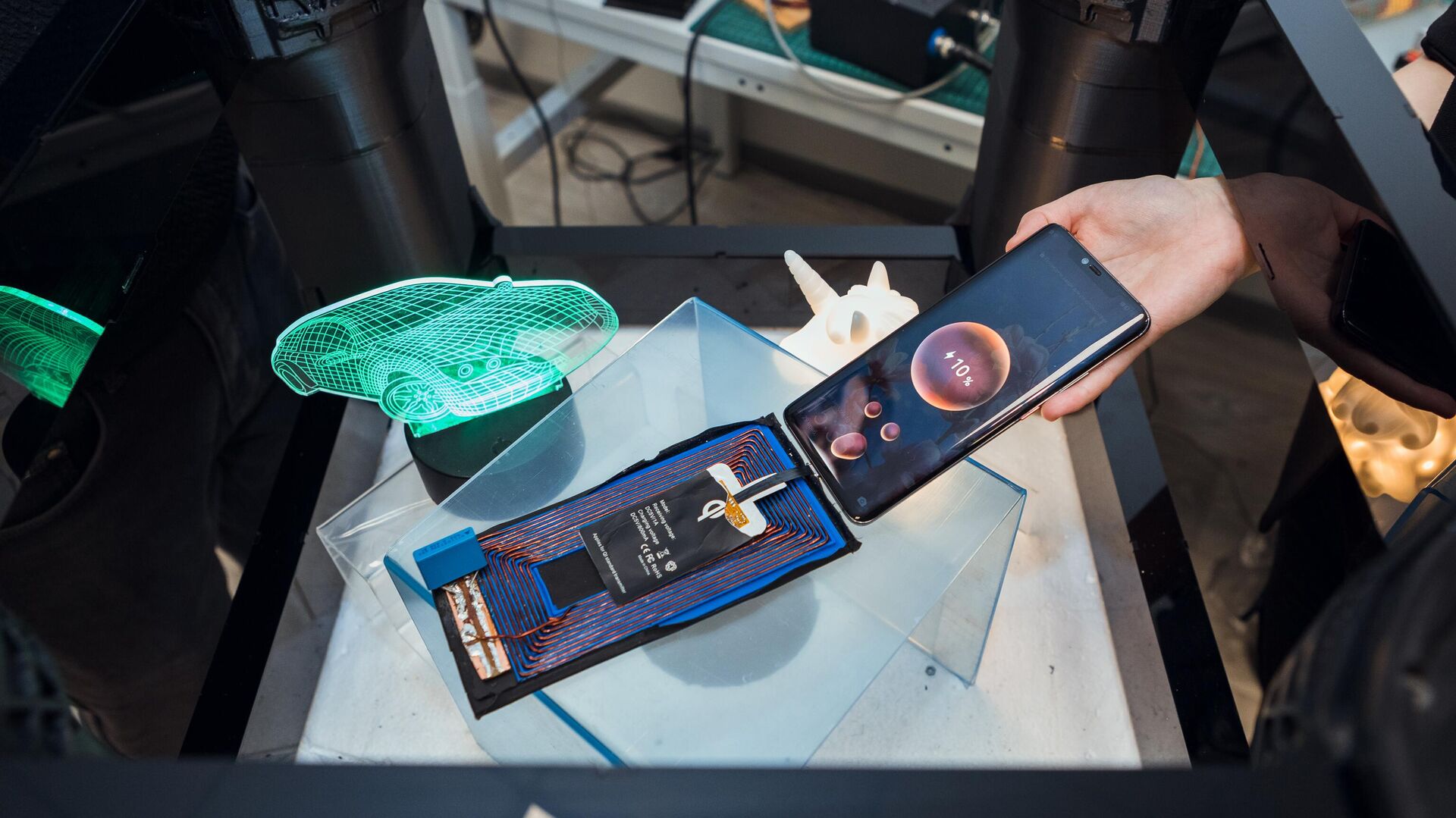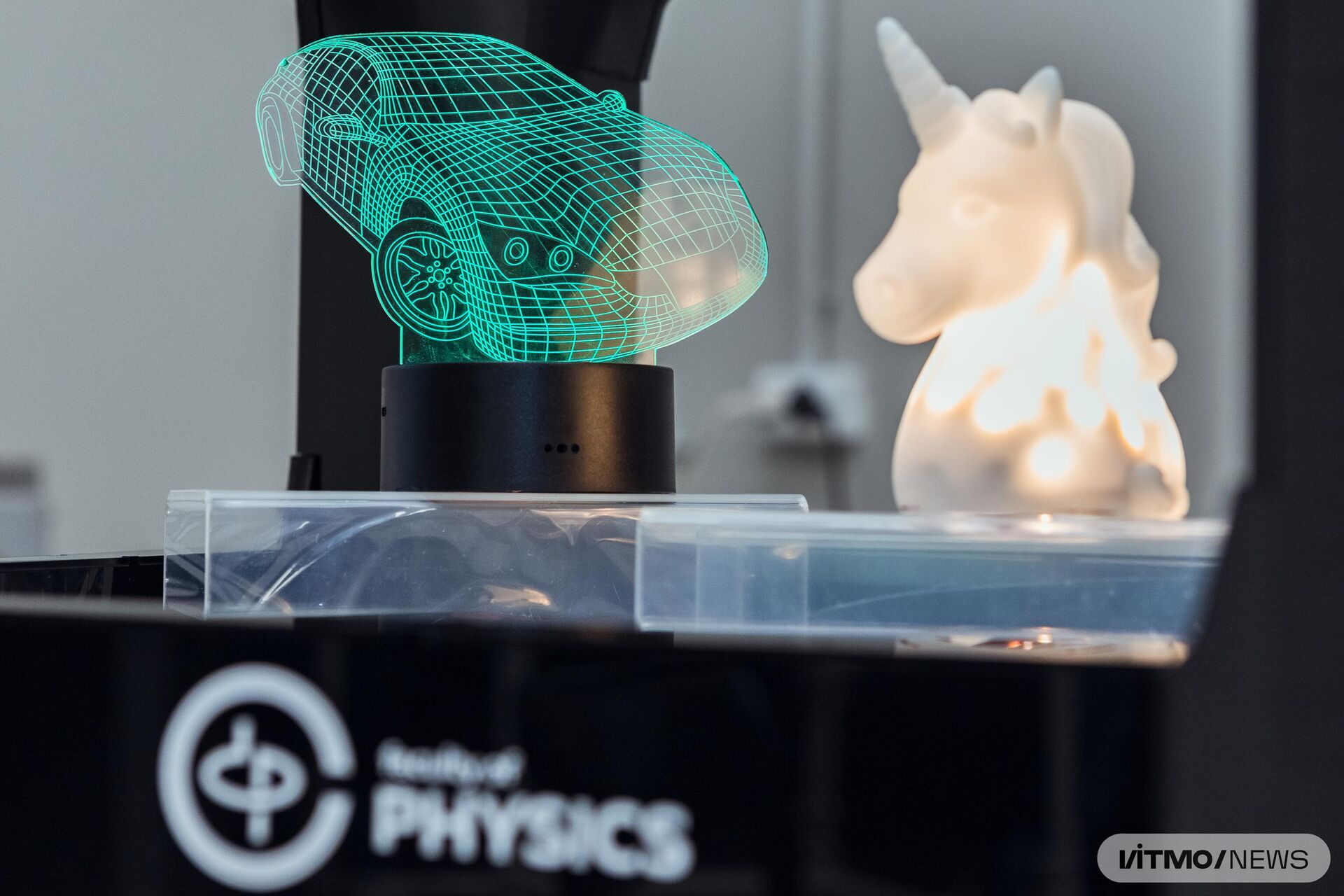Russian Scientists Roll Out Revolutionary Wireless Charger Tech
14:04 GMT 20.12.2022 (Updated: 10:43 GMT 21.04.2023)

© Photo : Dmitry Grigoryev / ITMO.News
Subscribe
Something none of us can do without these days is a charging device, so it is no wonder that the scientific community has been brainstorming how to render the process of powering up our plethora of devices quickly and with minimal hassle. A group of Russian scientists and engineers has unveiled a charger that they have touted as “revolutionary.”
New Russian charging tech may have you ditching your wires as obsolete. Scientists from ITMO University have developed a prototype of a novel type of wireless charger - a truly revolutionary product that they believe could change our daily habits.
Imagine a box with a magnetic field evenly distributed throughout its entire volume and all you need to do to charge, for example, your mobile phone, is place it somewhere in the box. According to the research team, the design could potentially be used to create entire charging "rooms." No more worrying about putting your phone on charge when you get home or generally fretting about whether you took your phone or laptop charging cable with you on a trip!

Russian scientists from ITMO University roll out ‘revolutionary’ wireless charger.
© Photo : Dmitry Grigoryev / ITMO.News
Bringing a 'Wireless World' One Step Closer
The idea of powering up multiple devices in a set volume of space had previously been proposed by researchers at the University of Tokyo and the University of Michigan, with scientists using a structure based on conductive surfaces, sheets of metal, and capacitors to create an oscillating circuit (resonator). This created a magnetic field inside a room, which could electromagnetically bind to small receiving coils attached to electrical devices.
However, once the ITMO University team embarked upon their own research, recreating such an analog in their laboratory, they were quick to realize the development had a major drawback: the magnetic field in such a structure is distributed unevenly. Not only was the magnetic field concentrated only in the center of the room, but the design was also quite difficult to integrate into different spaces, as one would need to enclose the space with large sheets of metal. Ultimately, the ITMO team came up with their own design.
The prototype built by the Russian scientists is a box 50 cubic centimeters in size that is able to charge at least three devices simultaneously, and it does not matter at which point of the box the gadgets are located, Alena Shchelokova, assistant professor at ITMO University’s Faculty of Physics, said. Power flows everywhere with the same efficiency, while the box works on the frequency supported by most mobile device manufacturers - 100 kHz (Qi standard).

Russian scientists from ITMO University roll out ‘revolutionary’ wireless charger.
© Photo : Dmitry Grigoryev / ITMO News
Some might be wondering at this point just how safe an entire "room" for wireless charging is for human health. Well, as part of the assessment of radiofrequency safety of the developed system, the ITMO team relies on international standards of various countries and organizations to limit the levels of electromagnetic (including separately magnetic and electrical) impacts on the human body.
The scientists have already verified the compliance of the developed box with the reference limitations on external fields of the most advanced of the reviewed IEEE Std C95.1™-2019 standards and determined the minimum allowable distances from the resonator conductors and the receiving antenna of the charger, Alena Shchelokova added.
The minimum safe distance for exposure to a magnetic field from the resonator conductors and the receiving antenna is 4 cm. At the same time, the impact of the electric field at a frequency of 100 kHz is much less than the magnetic field – the minimum safe distance is 5 mm. The hazardous area can be enclosed in the casing of the devices in order to ensure their safe use.

Russian scientists from ITMO University roll out ‘revolutionary’ wireless charger.
© Photo : Dmitry Grigoryev / ITMO.News
Reflecting on the challenging research, Shchelokova underscored they were fortunate to assemble a strong team of talented people, most of whom are students and graduate students at ITMO University.
Looking ahead, the researchers aim to make their technology available to a wide range of people, not only for personal use at home, but also in public places. For example, to equip special charging rooms or boxes in transport and public places. As for how their research could be used in the future, Polina Kapitanova said:
"In my opinion, the most ambitious project is the transmission of energy to any consumer without wires to charge the batteries of any electronic device... We have already developed smart surfaces to charge multiple electronic devices without wires and push this technology further. I believe we now find ourselves on the threshold of a new era, the era of wireless energy access. With the right development of wireless energy transmission systems, access systems, and improvements in technology, we can achieve a fundamental leap in the next few years and forget about wires."

